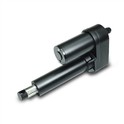Hey there! As a supplier of Cabinet Gas Dampers, I often get asked, "Can I install a cabinet gas damper myself?" Well, let's dive right into it and find out.
First off, what the heck is a cabinet gas damper? A Cabinet Gas Damper is a small but mighty device that helps control the movement of cabinet doors. It ensures that the doors close smoothly and quietly, preventing that annoying slamming sound. You can check out more about them Cabinet Gas Damper.
Now, onto the big question: Can you install it yourself? The short answer is, in many cases, yes! But like any DIY project, it comes with its own set of considerations.
Tools You'll Need
Before you start, gather the necessary tools. You'll typically need a screwdriver, a drill (if you need to make holes), a measuring tape, and maybe some pliers. Having these tools on hand will make the installation process a whole lot easier.
Step-by-Step Installation Guide
Step 1: Measure and Plan
The first thing you gotta do is measure your cabinet door and the frame. Make sure you know where you want to install the gas damper. It's crucial to get the measurements right to ensure a proper fit. Take your time with this step, as it can save you a lot of headaches later on.
Step 2: Prepare the Cabinet
If your cabinet doesn't already have holes for the gas damper, you'll need to drill them. Use your drill and the appropriate drill bit to create holes in the cabinet frame and the door. Make sure the holes are the right size for the gas damper's mounting brackets.
Step 3: Attach the Mounting Brackets
Once the holes are drilled, it's time to attach the mounting brackets. Use your screwdriver to secure the brackets to the cabinet frame and the door. Make sure they're firmly in place and aligned correctly.
Step 4: Install the Gas Damper
Now comes the fun part. Take your gas damper and attach it to the mounting brackets. It should fit snugly, but be careful not to force it. If it doesn't seem to fit right, double-check your measurements and the alignment of the brackets.
Step 5: Test the Installation
After you've installed the gas damper, test the cabinet door. Open and close it a few times to see if it moves smoothly and quietly. If there are any issues, like the door not closing properly or making strange noises, you may need to adjust the gas damper or the mounting brackets.
Potential Challenges
Of course, not everything always goes smoothly. There are a few potential challenges you might face during the installation process.
Compatibility Issues
Not all gas dampers are compatible with all cabinets. Make sure you choose a gas damper that's designed for your specific cabinet type and size. You can find more information about different types of gas dampers, including Gas Damper for Car, on our website.
Difficult-to-Reach Areas
Some cabinets may have hard-to-reach areas where it's challenging to install the gas damper. In these cases, you may need to get a little creative with your tools or ask for help from a friend or family member.
Lack of Experience
If you're not very handy with tools or have never done a DIY project like this before, you might find the installation process a bit daunting. That's okay! You can always watch some online tutorials or consult with a professional for guidance.
Benefits of DIY Installation
Despite the potential challenges, there are several benefits to installing a cabinet gas damper yourself.


Cost Savings
One of the biggest advantages is cost savings. Hiring a professional to install the gas damper can be expensive, especially if you have multiple cabinets to do. By doing it yourself, you can save a significant amount of money.
Sense of Accomplishment
There's nothing quite like the feeling of completing a DIY project successfully. Installing a cabinet gas damper on your own can give you a great sense of accomplishment and boost your confidence in your DIY skills.
Customization
When you install the gas damper yourself, you have more control over the process. You can choose the exact location and orientation of the gas damper to suit your specific needs and preferences.
When to Call a Professional
While DIY installation is possible in many cases, there are times when it's best to call a professional.
Complex Cabinets
If your cabinets are particularly complex or have unique features, it may be difficult to install the gas damper yourself. A professional will have the experience and expertise to handle these types of cabinets.
Lack of Time or Tools
If you don't have the time or the necessary tools to install the gas damper, it's probably best to hire a professional. They'll have all the tools and equipment they need and can get the job done quickly and efficiently.
Warranty Concerns
Some gas dampers come with a warranty that may be voided if you install them yourself. Before you start the installation process, check the warranty terms and conditions to make sure you're not risking the warranty.
Conclusion
So, can you install a cabinet gas damper yourself? The answer is that it depends. In many cases, with the right tools, a little patience, and some basic DIY skills, you can successfully install a cabinet gas damper on your own. However, there are also times when it's best to call a professional.
If you're interested in purchasing a Cabinet Gas Damper, feel free to visit our website Cabinet Gas Damper to browse our selection. We offer high-quality gas dampers at competitive prices. And if you have any questions or need further assistance, don't hesitate to reach out. We're here to help you with all your cabinet gas damper needs. Whether you're a DIY enthusiast or just looking for a reliable supplier, we've got you covered. So, take the plunge and start improving your cabinets today!
References
- General knowledge about cabinet gas damper installation
- Industry standards and best practices for gas damper installation






